1. 1
1.1. How can productivity be measured and what are the benefits/liabilities of measuring productivity?
1.1.1. Software Engineering
1.1.2. Productivity
1.1.3. Turnover
1.1.4. LOC
1.1.5. Benefits
1.1.5.1. Know where it stands
1.1.5.2. What can improve
1.1.5.3. Baseline
1.1.5.4. By measuring and controlling
1.1.6. Liabilities
1.1.6.1. Burdensome
1.1.6.2. Time consuming
1.1.6.3. Focusing on wrong goals or measurements
1.2. What project management actions were taken to ensure you could deliver the project on time?
1.2.1. WBS
1.2.1.1. Bottom-up estimating
1.2.1.2. Estimated appropriate scope of work for project
1.2.2. COSMIC 3.0 Estimation
1.2.3. Not high-risk features
1.2.3.1. Sequentially developed high-priority features first
1.2.4. Assessed risks
1.3. What was estimated and actual productivity (effort per size) for the coding phase?
1.3.1. Estimated versus Actual
1.3.2. Initial bottom-up WBS estimation
1.3.2.1. Used to compare to actual
1.3.2.2. Assumed working full effort
1.3.2.3. Estimated hours similair to SCRUM story points, so a 16 hours task completed was considered 16 hours of actual work
1.3.3. NOTE
1.3.3.1. VERY difficual to estimate ONLY coding
1.3.3.2. Different persons have different effort
1.3.3.3. Goal of estimation was more to define scope that could be done within project, so even though estimations were not continually updated and measurements were not perfectly accruage it still explains productivity
2. 3
2.1. Was the chosen life-cycle model the best choice?
2.1.1. Top-down Incremental model
2.1.2. Risk of changing requirements
2.1.2.1. Yes, req didn't change
2.1.3. Requirements well known
2.1.3.1. Yes
2.1.4. Reduce budget
2.1.4.1. scope reduction
2.1.5. Idea was not innovative
2.1.5.1. Combination of many exisiting ideas
2.1.5.2. Instagram
2.1.5.3. Instructables
2.1.6. requires good planning and design
2.1.6.1. Project Management plan
2.1.6.2. WBS
2.1.7. High level requirements developed early
2.1.7.1. Good, since at the end we needed to reduce scope
2.1.7.2. User feedback
2.1.7.2.1. Weakness, would have been nice
2.2. Compare and contrast to the strengths and weaknesses to other main life-cycle models.
2.2.1. Sprial Model
2.2.1.1. Risk analysis
2.2.1.2. Smaller projects
2.2.1.3. More instensive with added planning
2.2.1.3.1. Identify and resolve risks
2.2.1.3.2. Detirmine objectives
2.2.1.3.3. Plan iteration
2.2.2. Evolutionary
2.2.2.1. Similair to incremental
2.2.2.2. without structure
2.2.3. Extreme / Agile
2.2.3.1. Well known requirements
2.2.3.2. Rigid planning for estimation
2.2.4. Waterfall
2.2.4.1. Testing only once
2.2.4.2. Prototype only once
2.2.4.2.1. internal prototype
3. 4
3.1. Describe shortly three risk identification techniques
3.1.1. Expert Knowledge
3.1.1.1. Based on previous experience
3.1.2. Checklist
3.1.2.1. Industry Sources
3.1.2.2. Common risks
3.1.3. Framework
3.1.3.1. Previous experience
3.1.3.2. Rigid
3.1.3.3. Need to be adapted
3.1.4. Risk is probability and impact or consequence of the event
3.2. and, by example, one qualitative and one quantitative risk analysis technique.
3.2.1. Quanitative
3.2.1.1. Exposure Factor
3.2.1.2. http://en.wikipedia.org/wiki/Quantitative_risk_analysis
3.2.1.3. Probability * Impact
3.2.2. Qualitative
3.2.2.1. Ranking of relative probability and impact
3.3. What unexpected challenges were encountered and how were they managed?
3.3.1. Sickness
3.3.2. Scope reduction
3.3.3. Reassignment of duties
3.4. – Discuss the role of your project management plan in the identification and management of these challenges.
3.4.1. Reacted to work not being done
3.4.2. Scope reduction
3.4.3. Reassignment of duties
4. 5
4.1. Describe and explain one technique for:
4.1.1. Cost controlling
4.1.1.1. Budgeting
4.1.2. Schedule controlling
4.1.2.1. Scrum/Iteration/Increment meetings
4.1.3. Quality controlling
4.1.3.1. Definition of done
4.2. Assuming you were to conduct the project again, how would you manage the project more efficiently?
4.2.1. Christmas Vacation
4.2.2. Better defined increments schedule
4.3. Which tasks carried out were unnecessary, and why were they unnecessary?
4.3.1. Necessary is what the customer deems necessary
4.3.1.1. Development perspective
4.3.1.2. Learning perspective
4.3.2. From a learning perspective many tasks were necessary, but for the project they weren't
4.3.2.1. Post-mortem is useful, but the level of detail is high
4.3.2.2. Full SPMP according to IEEE was burdensome
5. 6
5.1. Explain the concept of situational leadership and reflect upon how it applied to your project experience.
5.1.1. The leader follows the steps of
5.1.2. (i) diagnosing the situation,
5.1.3. (ii) identifying the correct leadership behaviour and
5.1.4. (iii) implementing the leadership behaviour
5.1.5. Shoaib
5.1.5.1. Not able
5.1.5.2. Not willing
5.2. Were you able to develop an effective team?
5.2.1. No
5.3. – If so, what characteristics of an effective team were displayed, and how was this situation achieved?
5.4. – If not, what stopped your group from becoming effective?
5.4.1. Not enough time
5.5. How would you endeavor to correct this situation if the project was to continue?
5.5.1. Spend more time together

